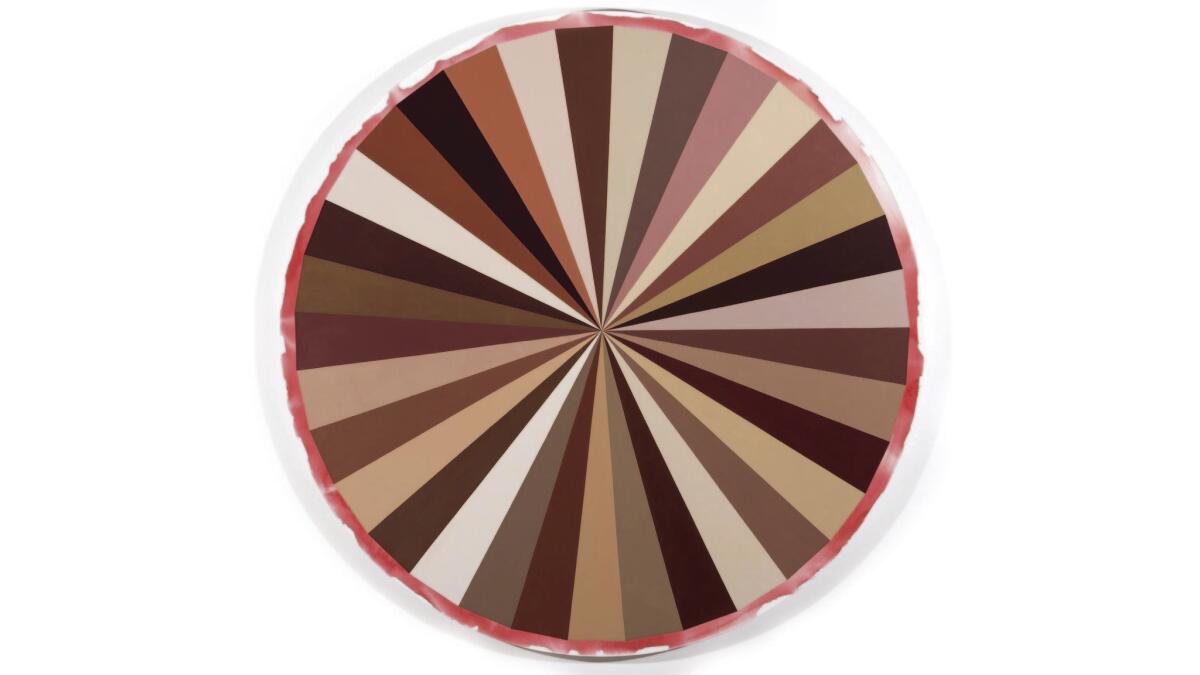Op-Ed: The term ‘people of color’ erases black people. Let’s retire it

- Share via
As a black woman, I seek out inclusive spaces because I lack them in my everyday life. I don’t think I’ve ever unintentionally entered a space and immediately felt like I was a part of the majority. I remember when I joined my first women’s group. I went to one club meeting, and never returned. I felt like every issue these women were struggling with affected me more intensely because of my race. It wasn’t empowering, just depressing.
No one looked like me. I didn’t expect to be in a room filled with black women, but I also didn’t think I’d be the only one. And while the others went on about empowerment, sisterhood and freedom, I was met with, yet again, a feeling I knew only I could understand. In a room full of women discussing ways to be heard among men, ironically, I was grappling with how to do just that in the room we were in.
I should have known better when I saw the group advertised as “women of color-friendly.”
The terms “women of color” and “people of color” are meant to be inclusive. But, from my perspective, they only help to leave black people behind — specifically black women. While every minority group faces its own challenges in America, a “one size fits all” mentality toward diversity erases the specific needs of the most vulnerable communities.
Any effort that sees the struggles of all minorities as a single movement is actually harmful.
Just look at the fashion industry. According to the Fashion Spot’s annual “Diversity Report,” one out of every three models in 2018 fashion ads were women of color. That certainly sounds like progress. But editorials and magazine covers lean heavily toward non-black women of color, and the terms non-white and women of color are used repeatedly to bolster the analysis.
To see for myself, I picked up a random high-end fashion magazine. Out of hundreds of models it had a total of 12 black women in it, admittedly better than the one or two I was expecting. Looking closer, however, I noticed that these women were either all extremely light-skinned, very dark-skinned or highly established in their careers, like Lupita Nyong’o.
This was highly conditional inclusivity. Your everyday black girl was missing.
While that’s perhaps not surprising for an industry that’s never been particularly hospitable to everyday anyone, uncritical boasts about more “women of color” in fashion are allowing an exclusionary industry to rehabilitate its image without actually doing the work — at black women’s expense. The industry gets to decide and control what type of black woman it deems fit and more importantly, tolerable.
Nonwhite does not mean black. Women of color does not mean black either. Too often, when a person or brand uses these descriptors, it papers over an absence of black people. Bella and Gigi Hadid are among the nonwhite models contributing to Fashion Spot’s misleading statistic. Though half-Palestinian and half-white, both women racially pass as white.
The reality is that not all “people of color” suffer equally from the effects of institutional racism. Black women are least likely to be promoted and supported by their managers in the workplace. Police kill unarmed black people at higher rates than other races, especially black women. According to the Sentencing Project, black women represent roughly 14% of the female population of the United States, but 30% of all females incarcerated. Black children are also almost 9 times more likely than white children to have a parent in prison while Hispanic children are three times more likely. Research also suggests that black women are more likely to be publicly objectified, harassed and dehumanized.
Meanwhile, in 2016, Asians were the highest-earning racial and ethnic group in the U.S. The median annual income for Asian adults was $51,288, compared with $47,958 for whites and $31,082 for blacks.
Of course, Asians aren’t a homogeneous block, and not all of them are thriving. For example, in Los Angeles County, elderly Korean and Cambodians are more likely to live in poverty and without access to healthcare than any other racial or ethnic group. This further emphasizes the limitations of blanket terminology and racial generalities, which can hamper the ability to identity the specific problems facing specific communities.
Enter the Fray: First takes on the news of the minute »
None of this is to say that the interracial and ethnic solidarity implied by the earnest use of “people of color” isn’t important. Of course, they are. Our struggles share commonalities. But even more important is doing the hard work of understanding and fighting to overcome the distinct layers of injustice that face people of different identities — and different layers within those identities. A black person has different challenges than someone who is both Muslim and black, and a black, Muslim woman has different challenges still. Parsing the implications of these differences, instead of flattening them, is what it means to be “intersectional,” an important but widely misunderstood concept — even by the liberals who use it most. Intersectionality is not about building the biggest interracial team possible. It’s about catering to the individual needs of different communities to make sure no one is left behind.
The idea of different groups of minorities working together to fight racism of all sorts is fantastic, but any effort that sees the struggles of all minorities as a single movement is actually harmful. Black women, for example, are a minority within a minority — and we’re being left behind. Rectifying that means the work of inclusivity has to go beyond being friendly to “women of color.” Perhaps the best place to start is to retire that term altogether.
Nadra Widatalla is a writer and producer living in Los Angeles. Follow her on Twitter: @nadrawidatalla
More to Read
A cure for the common opinion
Get thought-provoking perspectives with our weekly newsletter.
You may occasionally receive promotional content from the Los Angeles Times.






